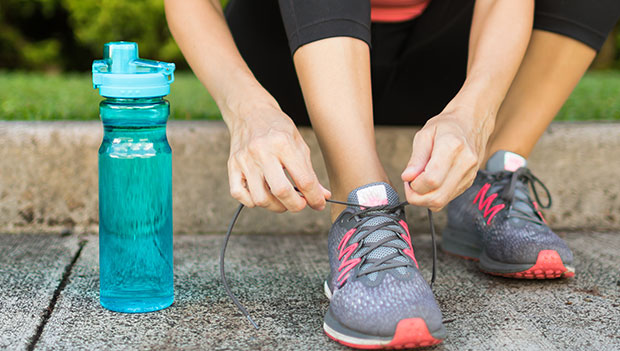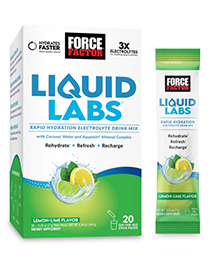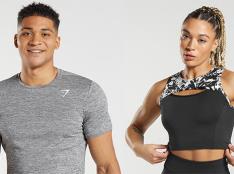
By clicking on the product links in this article, we may receive a commission fee at no cost to you, the reader. Sponsorships and affiliate commissions help support our research so we can help you find the best products. Read the full affiliate disclosure here.
Staying hydrated seems like it should be pretty simple—just drink when you're thirsty, right? It doesn’t have to be complicated, but it does take some strategy, especially when you’re a runner. The body is made up primarily of water, so it’s crucial to stay on top of how much you need. Water regulates your body temperature, cushions your joints, aids in digestion, and so much more. When you drink enough fluids, you can maximize your running performance and avoid the yucky side effects of dehydration (think: headaches, muscle cramps, and fatigue).
These tips can help you dial in on how much water to drink and when. Keep in mind that all bodies work a little differently, so it may take some trial and error to find the right hydration strategy for you.
How Much to Drink
Exactly how much do you need to drink in a day? Again, this will depend on numerous factors including your body size, the climate, and the amount that you exercise, but a good place to start is approximately 91 ounces (11.5 cups) for adult women and 125 ounces (15.5 cups) for adult men. That sounds like a lot (and it is!), but luckily, it doesn’t have to be plain water. Milk, juice, and herbal teas count as well as the liquid in foods like fruits, vegetables, soups, and smoothies. And for coffee lovers, recent studies have shown that java can hydrate just as well as water. Here’s a breakdown of when and how much to sip.
Before Running
Aim for 12-20 ounces of water in the hours leading up to your run. If your urine is clear or pale yellow, you’re likely well hydrated. If it’s more concentrated, drink another 8-16 ounces.
During Running
A few sips of water are probably sufficient for runs under an hour, but once you start running for more than 60-90 minutes, you’ll need more fluids, in addition to electrolytes and carbohydrates. For longer runs or when the conditions are hot and humid, aim to drink to thirst. It’s important to avoid over-hydrating with just water as this can lead to a dangerous electrolyte imbalance called hyponatremia. It can be helpful to know your sweat rate when calculating how much to drink on a run.
To figure out how much water you lose per hour, weigh yourself naked before and after a 60-minute run. Don’t drink anything or use the bathroom during the run. For every pound of body weight lost, you can figure you lost 16 ounces of water via sweat. Aim to replace that amount during and after exercise.
After Running
For most runs, you can eat and drink as you normally would and you’ll recover just fine. For particularly hard or long efforts, aim to drink a few cups of fluids within an hour after the run. Continue to focus on drinking to thirst throughout the day and consider adding electrolytes in the form of sports drinks or powders. The extra sodium in these products will help your body hang on to some extra fluid. If you’re looking to speed up recovery, it’s important to choose fluids beyond plain water.
Featured Electrolyte Drink: Force Factor Liquid Labs Energy
This powdered electrolyte drink mix also contains ingredient blends for energy, focus, hydration, and immune health. Each box of Force Factor includes 20 sticks in Mango Margarita or Fruit Punch flavors. It's also incredibly easy to take along on your run for an extra boost of energy and hydration when mixed with water.
Hydration Tips
Whether you’re a veteran runner trying to upgrade your hydration game or a newbie figuring it out, these tips can make hydrating a bit easier:
- When using something besides plain water, experiment until you find a flavor and ingredient combo that you like. Depending on your unique body composition and training goals, you may need a product with more sodium or less sugar, or X grams of carbohydrates. It’s all about trial and error.
- If you’re training for a race, practice your fueling strategy. If you’ll be carrying your own hydration device, such as a handheld water bottle, take it with you on all types of runs (fast, long, recovery). We like the Nathan QuickSqueeze insulated handheld bottle. Its ergonomically shaped design and valve nozzle make it comfortable to carry and easy to drink from.
- If you’re more of a running pack type, the Nathan QuickStart 2.0 4 Liter Hydration Pack is priced affordably and allows you to carry not just hydration but also your phone, fuel, and keys. Packs like this can be particularly beneficial to trail runners and hikers.
- If you don’t want to carry a bottle or wear a vest, consider mapping out a route with water fountains or running loops around your house or car, so you can rehydrate every few miles.
- If you’ll be taking water from cups on the course, it’s a good idea to practice with those as well. To prevent spilling the liquid as you run, grab the cup, then gently squeeze to make a spout and drink it that way. Some runners also prefer walking through water stops to make sure they’re able to get the liquid down.
How to Prevent Dehydration
Dehydration is generally defined as a 2-3 percent or more decrease in body weight due to water loss. Dehydration can have a number of negative side effects on runners including decreased performance, muscle cramps, headache, and fatigue. To prevent it, it’s a good idea to know your individual sweat rate. At a minimum, follow the guidelines above for daily intake (about 91 ounces for women and 125 ounces for men). If you’re an endurance athlete or have a high sweat rate, you’ll need more. A good rule of thumb is to monitor the color of your urine. You want it to be pale yellow. If it’s any darker than lemonade, it’s likely too concentrated, indicating dehydration.
How to Prevent Overhydration
Although it’s rare, overhydration can lead to a serious condition called hyponatremia, where the body’s blood sodium levels are too diluted. In runners, this is often caused by drinking too much water and not enough sodium. Some of the symptoms of hyponatremia are nausea, fatigue, cramping, vomiting, weakness, sleepiness, and in extreme cases loss of consciousness or death. Again, it’s pretty unlikely, but in order to prevent it, you’ll want to rehydrate with a mix of electrolytes. For longer runs and races, mix some electrolytes into your water bottle. We like Nuun tablets or Gnarly Hydrate for a mix of electrolytes that don’t come with a ton of added sugar. Gnarly Hydrate is also NSF content and sport-certified meaning it’s rigorously tested for contaminants and is guaranteed not to contain any banned substances (crucial if you’re a pro!). If you prefer plain water or don’t like carrying your own bottle, there are some electrolytes that come in pill form, Salt Stick.
Hypotonic, Isotonic and Hypertonic Drinks
Sports drinks are categorized as either hypotonic, isotonic, or hypertonic, depending on how their concentration of electrolytes and carbohydrates compares to that of human blood. The technical name for this is a drink’s tonicity and it’s important because it affects osmosis or the movement of water in and out of the body’s cells. Ultimately, tonicity determines how quickly the bloodstream can absorb fluids, electrolytes, and carbohydrates.
Hypotonic Drinks
Hypotonic drinks have a lower concentration of fluid, sugars (a.k.a. carbs), and salt than blood. This means they are quickly absorbed by the bloodstream and gut lining and are a great way to rapidly rehydrate. The one downside to hypotonic drinks is that they are in fact low in carbohydrates, which can aid in performance and recovery.
Isotonic
Isotonic drinks have a similar concentration of fluid, sugars, and salt to blood. Most commercially available sports drinks, like Gatorade, are isotonic. They provide more carbohydrates than hypotonic options, but they take a bit more energy to be absorbed, so fluid and electrolyte uptake is slower. Which option you choose will likely depend on your goals (are you trying to rehydrate quickly or recover?), but in general think of isotonic drinks as the "goldilocks" option.
Hypertonic Drinks
Finally, hypertonic drinks have a higher concentration of fluid, sugars, and salt than blood. These beverages are often used as recovery drinks and are a good way to top off glycogen stores. The downside is that they aren’t absorbed as quickly as hypotonic or isotonic drinks.
Water or Sports Drinks When Running
As mentioned above, water makes up the majority of the body, so it’s really crucial for not only daily functions but also athletic performance. Whether you’re a casual runner or training for endurance events, you may have questions about what you actually need to be consuming.
If you’re exercising for less than an hour and conditions aren’t too hot and humid, you’re likely fine with plain water. If you’ll be running for longer than 60 minutes and/or the conditions are warm, it’s time to consider a sports drink.
There are two types of "sports drinks"—those with carbohydrates and those without. Carbohydrates are what give your body energy and the majority of scientific studies show performance improvements when they are consumed during exercise sessions of greater than an hour. If you’ll be running for more than an hour, aim to take in about 50 grams of carbohydrates per hour, after the first hour. It can be a mix of gels and sports drinks or just sports drinks alone.
If you’ll be running for less than an hour or prefer to consume your carbohydrates via gels or chews, you may do well with electrolytes-only sports drinks like Nuun, Gnarly Hydrate, or LMNT.
How to Start Running | Running Tips | Hydration for Runners | Best Running Shoes for Beginners | Most Comfortable Running Shoes | Best Sports Bras for Running | Best Running Jackets | Best Budget Treadmills | Best Budget Fitness Trackers
Get ACTIVE on the Go


Couch to 5K®
The best way to get new runners off the couch and across the finish line of their first 5K.
Available for iOS | Android




Discuss This Article